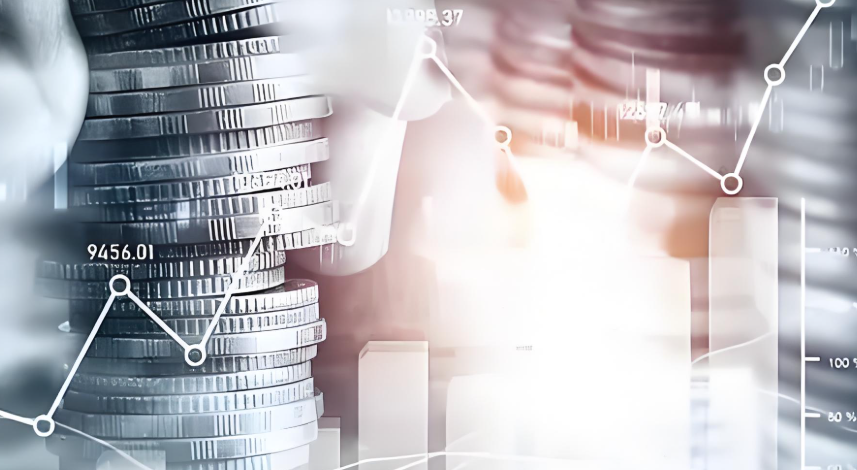The Trader's Triple Dilemma of 2025
Advertisements
As we approach the climax of 2025, the excitement in the financial markets reaches a fever pitch, akin to a rollercoaster rideThe world has braced itself for what has become a tumultuous year, where stocks, bonds, commodities, and currencies fluctuate wildly, reflecting a complex interplay of geopolitical, economic, and market forcesInvestors now find themselves grappling with an intricate ‘three-body problem’, not unlike the physicists who struggle to predict the interactions of three celestial bodies under gravitational influenceThis metaphor captures the essence of their plight, as unpredictability looms in the face of volatile market conditions.
The backdrop of this chaotic landscape is largely painted by U.Spolicy decisions that have introduced a slew of unpredictable variablesFrom trade disputes to evolving regulations surrounding cryptocurrencies, the landscape appears more opaque than ever
While American consumer performance continues to exceed expectations, bolstering the world's largest economy, other regions appear to be marching to a different beat, with their economic circumstances far from secureIn light of this, prominent commentators like Marcus Ashworth and Mark Gilbert have cautioned that investors should brace themselves for a tumultuous journey ahead.
Reflecting on Federal Reserve actions, the mood last year was one of optimism among futures traders who believed the Fed would cut interest rates to stave off recessionHowever, the anticipated monetary easing failed to materialize in the dramatic fashion expectedAs 2023 unfolded, lofty expectations surrounding rate cuts faced a reality tempered by the Fed’s relentless focus on combating inflationWould 2025 represent a turning point?
One year ago, the Federal Reserve maintained a remarkably restrained public profile, arguably because it did not have to engage in verbose discussions
- Pitfalls of the Forex Market
- Competition in the Billion-Dollar Data Market
- Manufacturing Sector Sees Three Months of Growth
- Industry Giants Push for Real-World Tech Deployment
- 2025 Treasury Market: Trends and Drivers
The American economy exhibited surprising strength, leading to a waning of recession worriesThis silence may carry over into the new year, or we might witness a dramatic pivot, potentially triggering a more assertive response from the Fed depending on unfolding economic realities.
On the global stage, stock markets surged to unprecedented heights, with the U.Sstock market witnessing a remarkable turnaround as bears capitulatedLast month, global equities reached record highs, boasting a cumulative market capitalization nearing $128 trillion, buoyed by technology giants such as Apple, NVIDIA, Microsoft, Amazon, and Meta Platforms, all of which rode the wave of artificial intelligence excitementNot only did U.Smarkets thrive, but indices in Japan, Spain, and Hong Kong also advanced, each witnessing gains of more than 14%. Even the recalcitrant German DAX index saw a remarkable increase, climbing 19%.
This frenzy compelled some notable bears to concede defeat
Economists like David Rosenberg, amid the surge, publicly lamented their bearish positions, admitting that while the market excitement appears exaggerated, it may not be wholly irrationalMoreover, in November, JPMorgan reversed its longstanding bearish forecast for the S&P 500 after two consecutive years of pessimismIf we recall the sentiments of veteran strategist Marko Kolanovic, whose departure from JPMorgan came as a shock considering his previously bearish stance, it reflects the broader sentiment shift permeating the market.
Even in the face of this unanticipated bullishness, some investors are holding on to their bearish predictions, armed with the courage to wager against the prevailing trendsYet, the exuberance surrounding artificial intelligence stocks has created an atmosphere where fear of missing out outweighs caution.
In the realm of currencies, the U.Sdollar’s meteoric rise presents challenges for resource-poor countries that rely on depreciating their currencies to purchase dollar-denominated commodities

With rising tariffs emerging as a potential crisis, it begs the question: how can these nations alleviate pressure amidst such difficult circumstances?
The fundamental commodity driving the global economic narrative is oil, a vital barometerOil prices usually mirror the logistic hurdles facing burgeoning demand from powerhouse economies like China and IndiaCurrently, demand seems robust; however, a seismic shift in the supply landscape is reshaping the game entirely.
Overwhelming supplies from the Americas, including gains from the Permian Basin and increased output from South American countries like Brazil and Venezuela, are redefining market dynamicsFurthermore, China’s pivot towards electric vehicles and substantial increases in nuclear and natural gas energy supplies portend lasting changes to traditional energy landscapes.
As inflationary pressures linger, it appears many no longer regard it as a pressing concern, pushing central banks to shift their focus towards mitigating economic slowdowns
But the inflation narrative is far from resolvedThe swap markets indicate that while the European Central Bank may not encounter entrenched inflation pressures, the Bank of England has a more complex path aheadInterestingly, even as the U.Seconomy continues its remarkable performance, the Federal Reserve seems not to face a stubborn inflation crisisYet, the question remains whether the recent pricing surges have irreversibly tarnished the Fed’s credibility.
Taking a broader view, what does the future hold for bitcoin? Even as prices recently surged past the $100,000 mark, skepticism persists regarding its legitimacyNobel laureate economist Paul Krugman brought attention to the glaring absence of legitimate use cases for bitcoin over the past 15 years, an assessment that commands serious scrutinyDespite elaborate price movements, bitcoin finds itself at a crossroads from which it is still struggling to emerge.
What lies ahead for cryptocurrency? The recent price jump can be linked to a prevalent hope that government regulatory attitudes towards digital currencies may soften